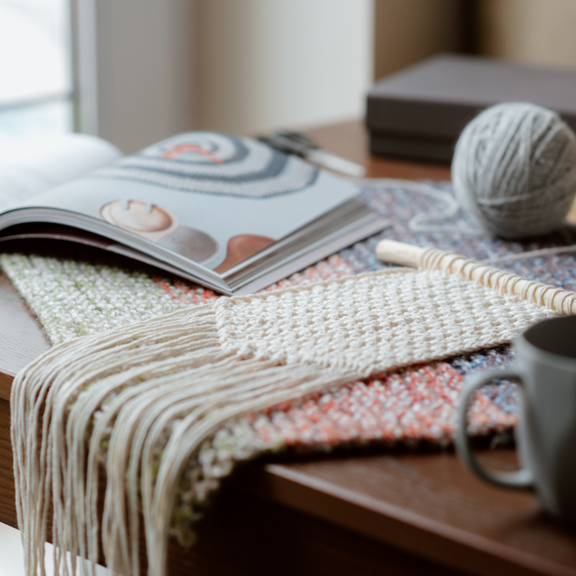Macramé- A Visually AppealingTextile Art

Macramé is a unique style of textile art that employs a variety of knotting techniques to create beautiful designs. It is a crafting technique that is useful in creating free-form artworks and geometric patterns using threads, without the help of a needle.
Even though it sounds unfamiliar, Macramé isn’t a hard art form to learn. The idea is simple, this technique utilizes several knots to create the basic shapes. All those knots can be easily created with your hands and no additional tools are required for knotting. Threads of different colors are used in Macramé to give them their unique appeal.
The history of Macramé dates back several decades. However, since Macramé products can be used as wall hangings and room decorations, the artisans are always involved in discovering innovative ways to develop this art. This old-age practice has regained popularity in recent years, and due to its practical feasibility, this method is expected to continue further.
A brief history
There have been early indications of Macramé being used as decorations in the carvings of Assyrians and Babylonians. Many historians also believe that the ancient Persians used these knotting techniques in artifacts that date back to BC centuries.
Back in the 13th century, Arab weavers used the Macramé style in creating decorative fringes of veils, shawls, and so on. The word Macramé is believed to originate from the Arabic word macramia, which indicates “embroidered veil”, “striped towel” or “ornamental fringe”.
Like the Arabs, the Chinese have also employed this technique for a variety of applications such as for decorative lanterns, hangings, and ceremonial garments.
Many European sailors used this weaving technique for making decorative knots while they sail. Through such sailors, this technique was later distributed to Europe and reached England where the court ladies were taught this artistry under the guidance of Queen Mary II.
Common Materials and Supplies used in Macramé
A wide variety of materials are used in creating this beautiful form of art. The cords used for Macramé are usually made from jute, cotton, twine, linen, leather, yarn, or hemp. They are picked based on the purpose and construction, for example, a large project might require a three-ply cord pattern made of three lengths of fiber.
Some of the additional supplies required for beginning Macramé projects include dowels, scissors, hoops, mounting rings, measuring tapes, and embellishments like beads. A knotting board is also often used for mounting the cords used in work.
Types of Macramé Knots
There are plenty of knots with noticeable variations, that can be applied in making Macramé projects. The popular ones among them are the square knots and half notes.

Here is a list of the most commonly used knots in Macramé art:
Square Knot: A square knot includes two flat knots tied in opposite ways. The basic knots will have four ends, which when brought together result in the square knot.
Hitches: Hitches can be horizontal, diagonal, or vertical. They consist of four flat knots, which are actually created by pulling the left edge over the right edge.
Lark Head (cow hitch knot): A type of hitch knot in which the knots are made by tying half hitches in opposite directions, on the primary thread, in the form of loops on the thread.
Barrel Knot: This knot appears to be in the form of rings tied on a string, it is often tied at the end of tassels.
Long Barrel Knot: Similar to barrel knots, they just become longer.
The Connecting Knot: It helps in connecting two or more threads and providing a strong connection.
Half Knot Spiral: Also known as the spiral stitch knot. This knot is made with half of a square knot.
Half Hitch Spiral: Uses one strand of working cord to tie a series of half hitches around the other strands.
Berry Knot: Decorative knots created by tying square knots. Knots are created by bringing together a single cord and two filler cords.
Overhand Knot: One of the simplest knots, tied by passing a thread’s end around the standing part to form a loop, bringing the end through the loop.
Wrapping Knot: A knot mostly made to group together and secure a bundle of cords.
Macramé brings the advantage of using easily accessible materials to create intricate designs that lure the attention of people. The most important material in this artistry is the cords, they have to be made of high quality and should be easy to twist and unravel.
While opting for Macramé works, it is obvious that no compromise shall be made on its reliability and quality. The same is applicable in the case of similar delicate and intricate art forms.
This is where you can rely on Qube Art Gallery, an optimal solution for all your artwork supply needs. We, at Qube Art, bring you a variety of services and the best quality artworks that connects with you in a deeper sense, more than just being an aesthetic creation.




